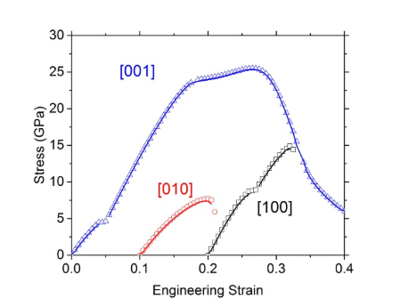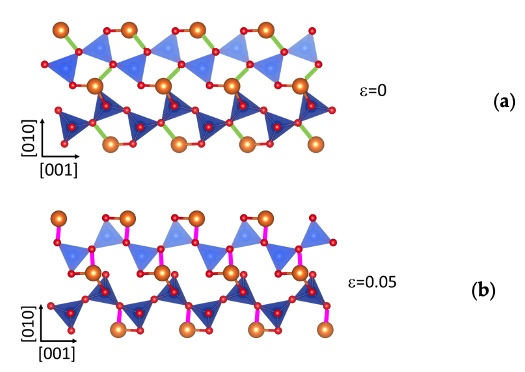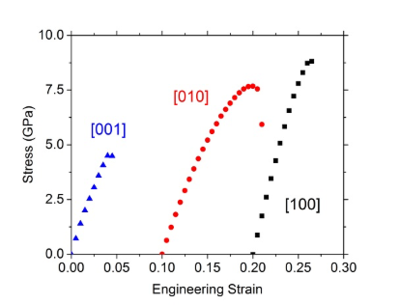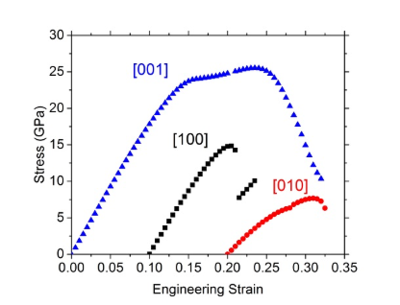Ultimate mechanical properties of enstatite
Using first-principles calculations, we characterized the ultimate mechanical properties of MgSiO3 orthoenstatite (OEN) by the ideal tensile and shear strengths (ITS and ISS). We applied homogeneous strain increments along high-symmetry directions ([100], [010], and [001]) and low index shear planes ((100), (010), and (001)) of the orthorhombic lattice.
Tensile straining of OEN leads to very anisotropic mechanical properties with the [001] direction leading to exceptional strength of the order of 25 GPa.
The tensile curve along [001] shows an accident at ca. 5 % strain which corresponds to the weakening of a Mg2-O bond immadiately followed by the formation of another bond which allows the structure to maintain its mechanical resistance.
Such an increase in material stiffness at large strains due to bond reconstruction has already been reported by Jiang & Srinivasan (2013) in cementite during [001](010) shear loading.
Here we show that it is the elongation of the chain B of tetrahedral sites which induces this bond reconstruction leading to the formation of a modified structure
Chain B of tetrahedral sites: (a) without deformation, enstatite structure (b) modified structure at 6 % of strain for tensile deformation along [001]. The Mg-O bonds in green correspond to the lost bond after 6 % of deformation. The Mg-O bonds in purple correspond to the new Mg-O bond. The Mg are in orange, O in red and Si in blue.
This identification allows us to distinguish the properties of the two phases: enstatite and its modified phase
To learn more:
K. Gouriet, P. Roussel, P. Carrez & P. Cordier (2022) Ultimate mechanical properties of enstatite. Physics and Chemistry of Minerals, 49, 30, https://doi.org/10.1007/s00269-022-01206-5.
Reference:
Jiang, C., Srinivasan, S. Unexpected strain-stiffening in crystalline solids. Nature 496,
339–342 (2013). doi.org/10.1038/nature12008





